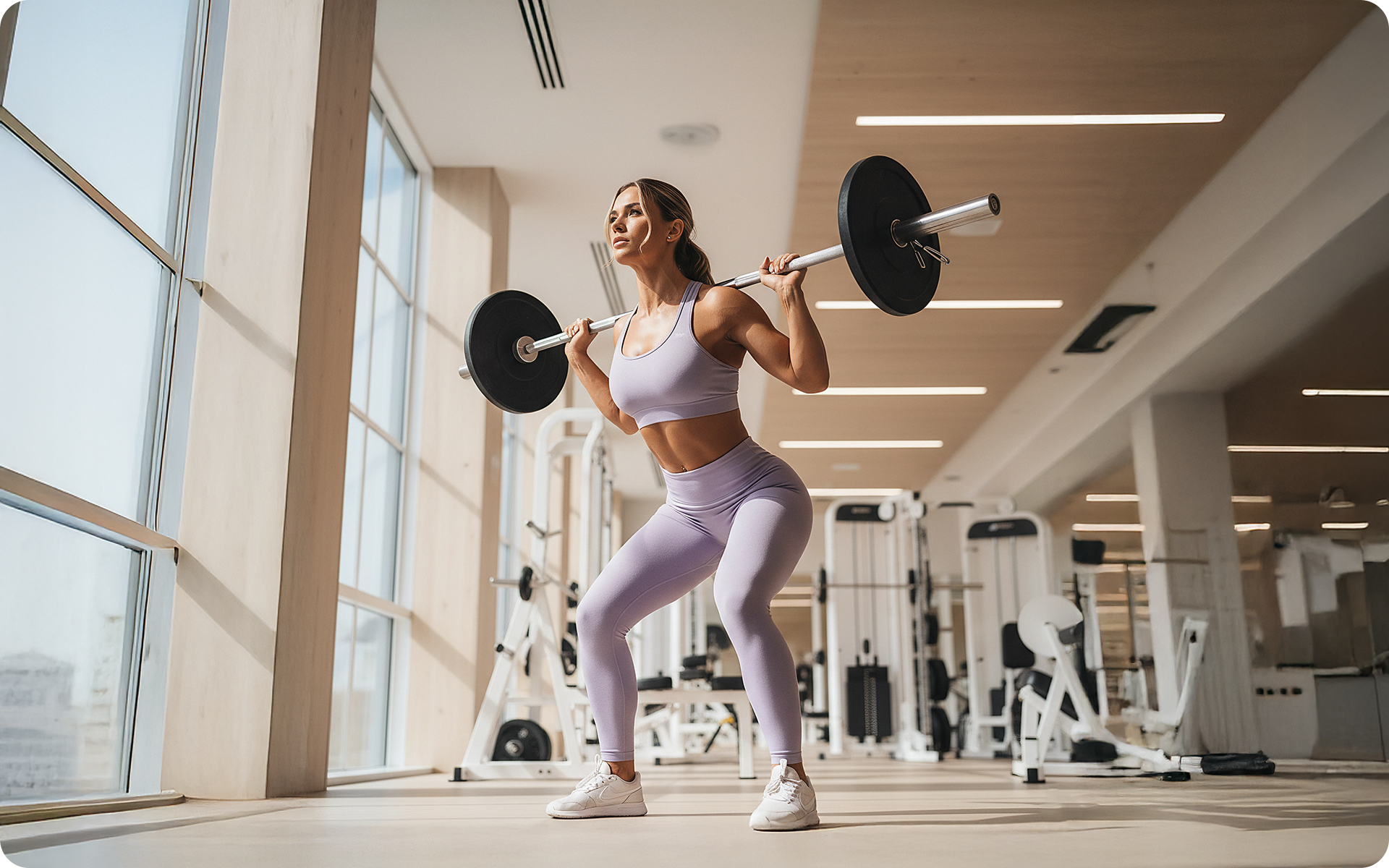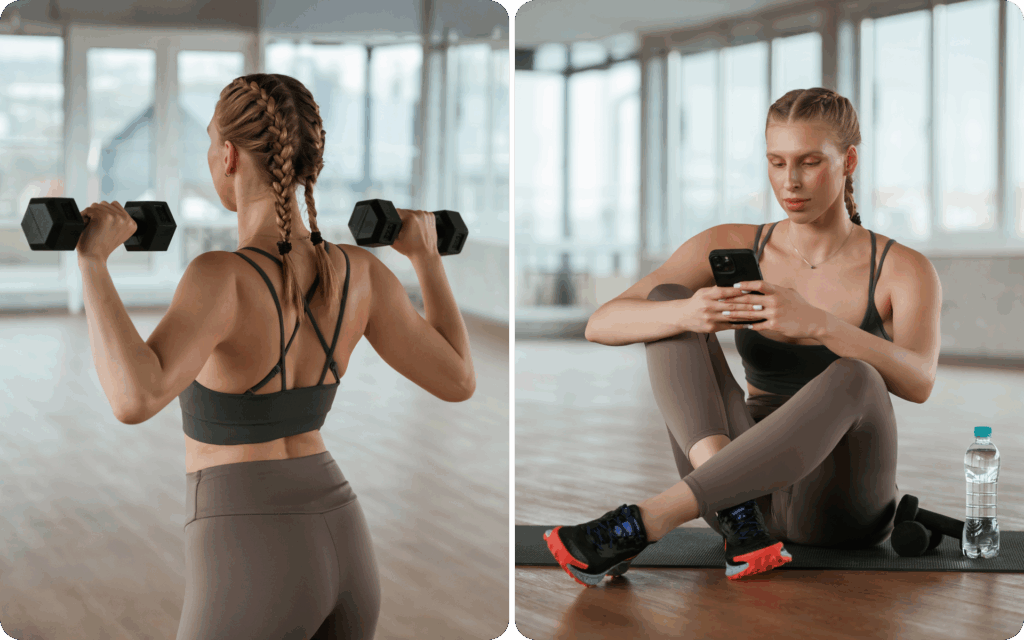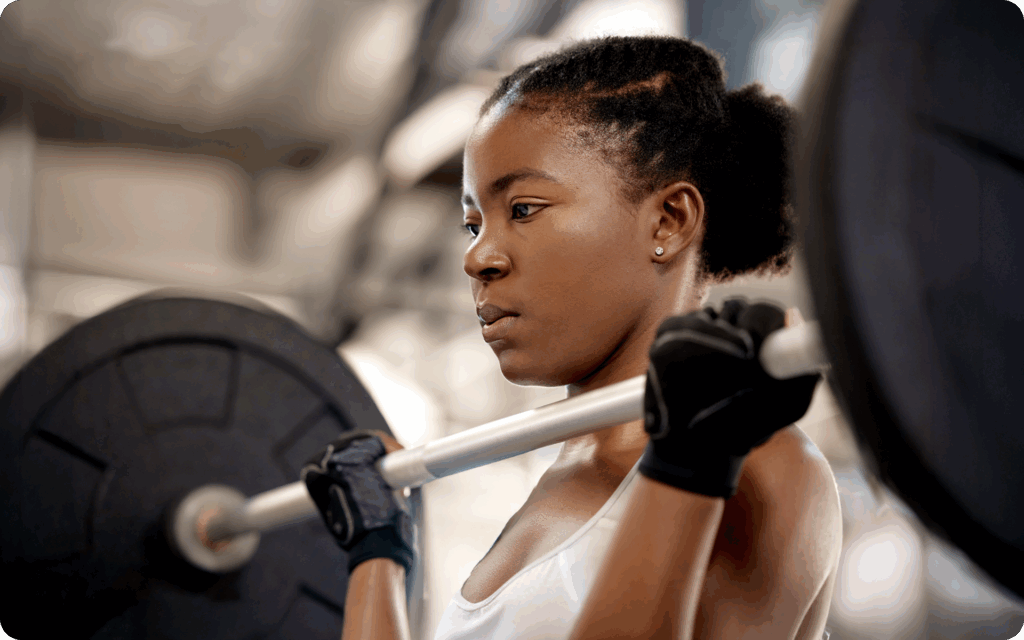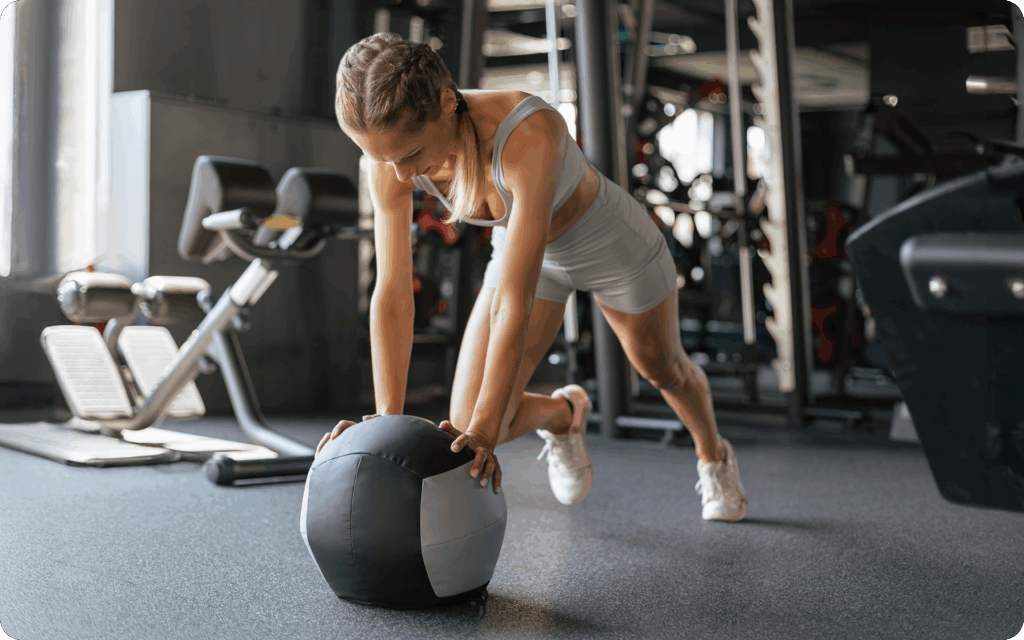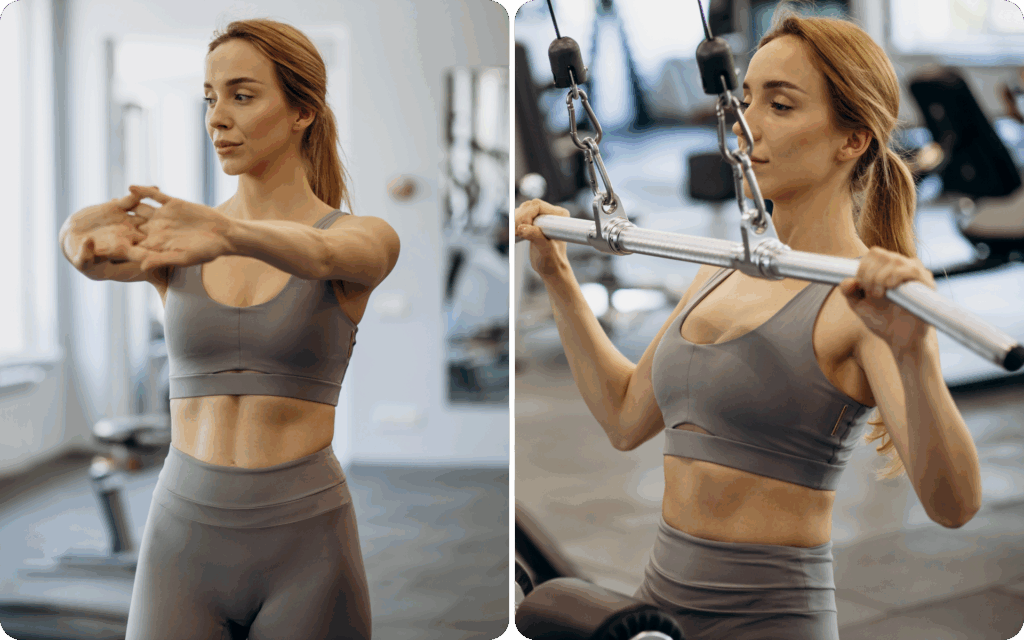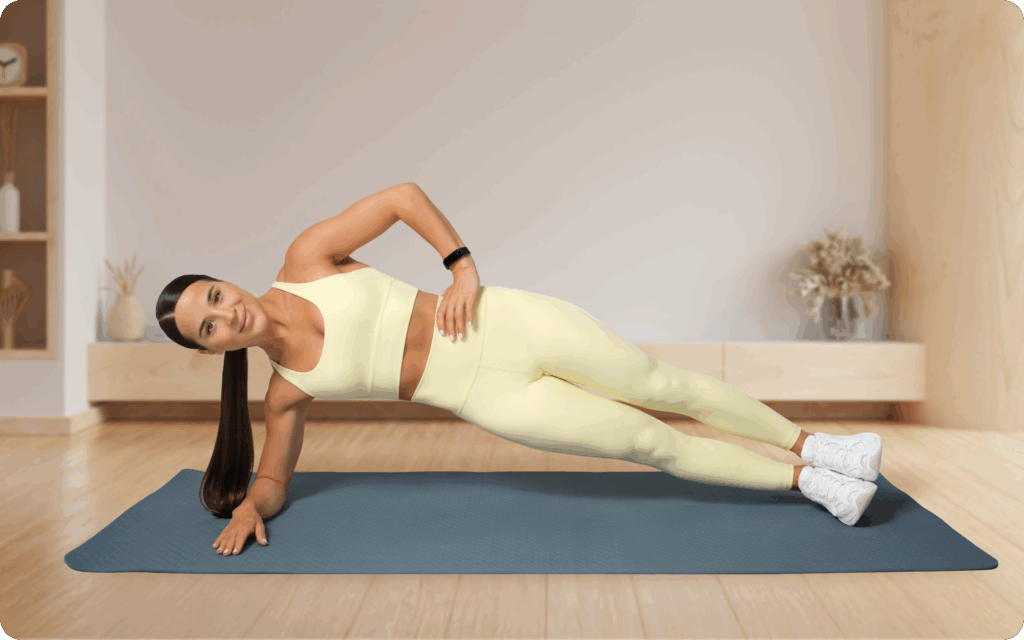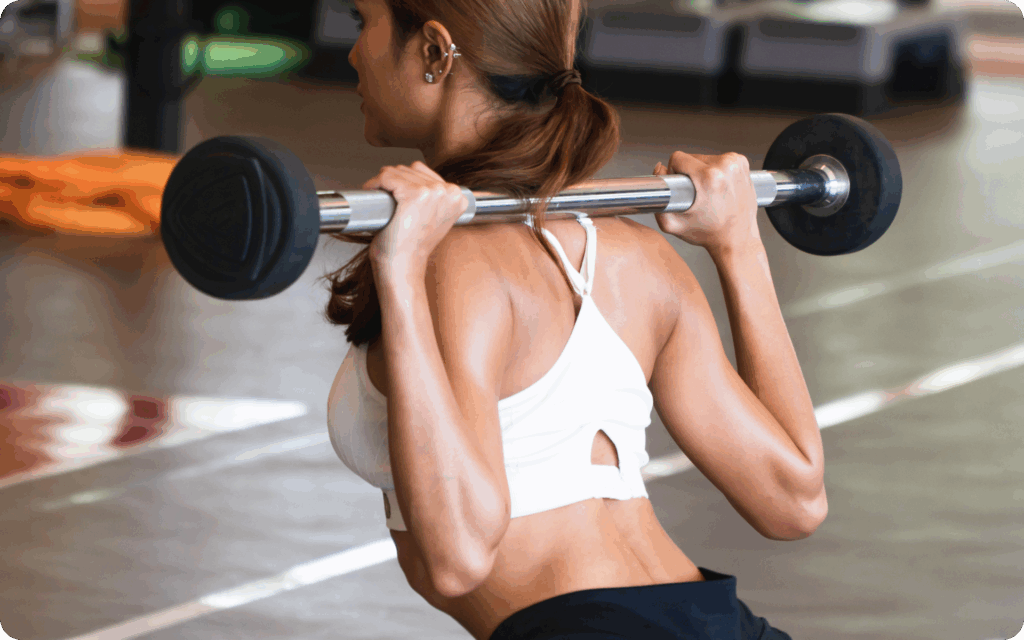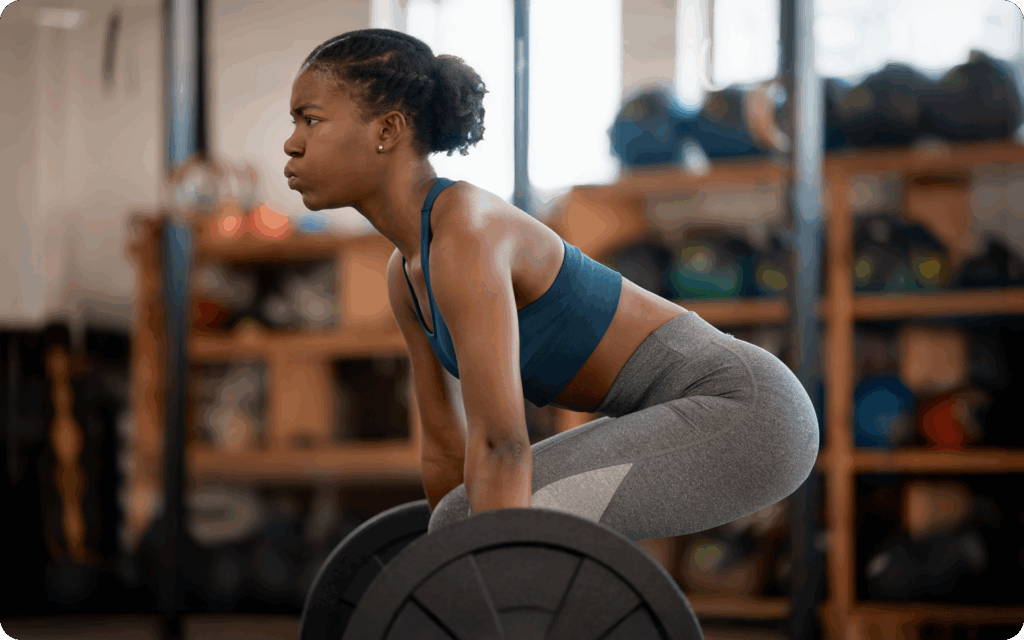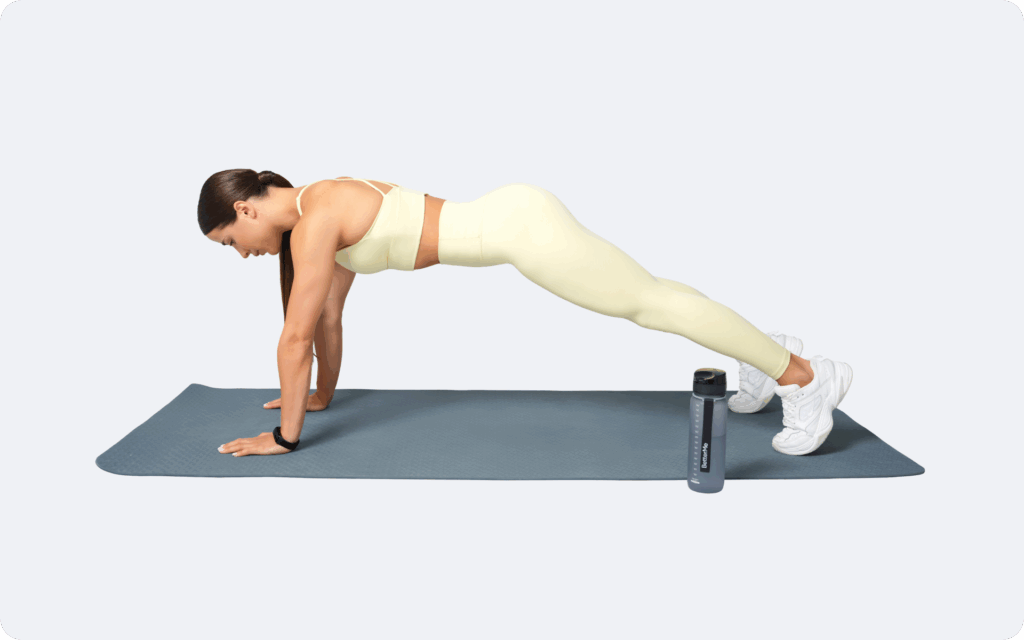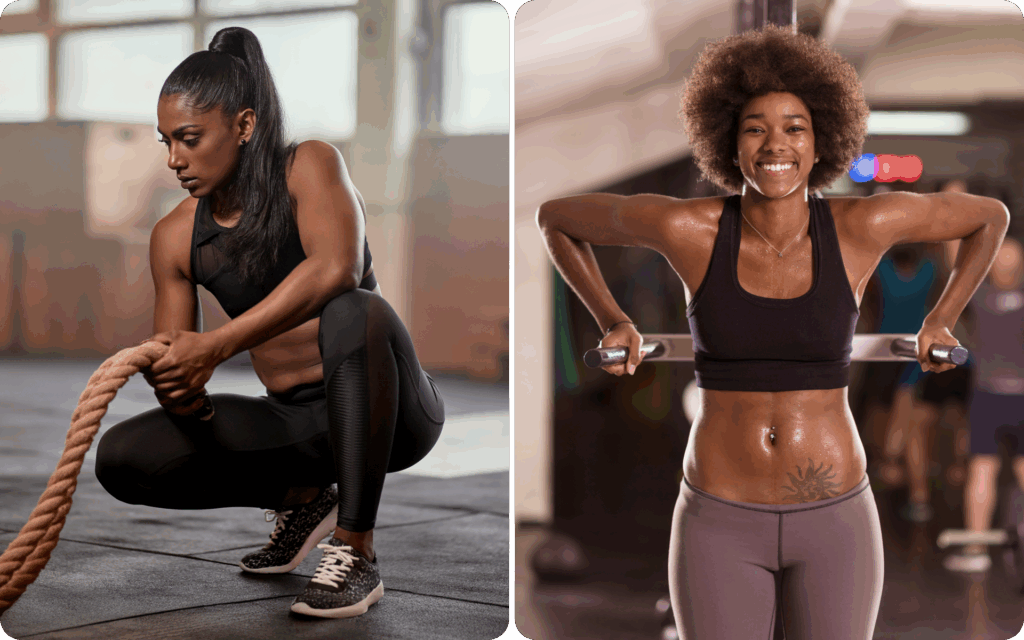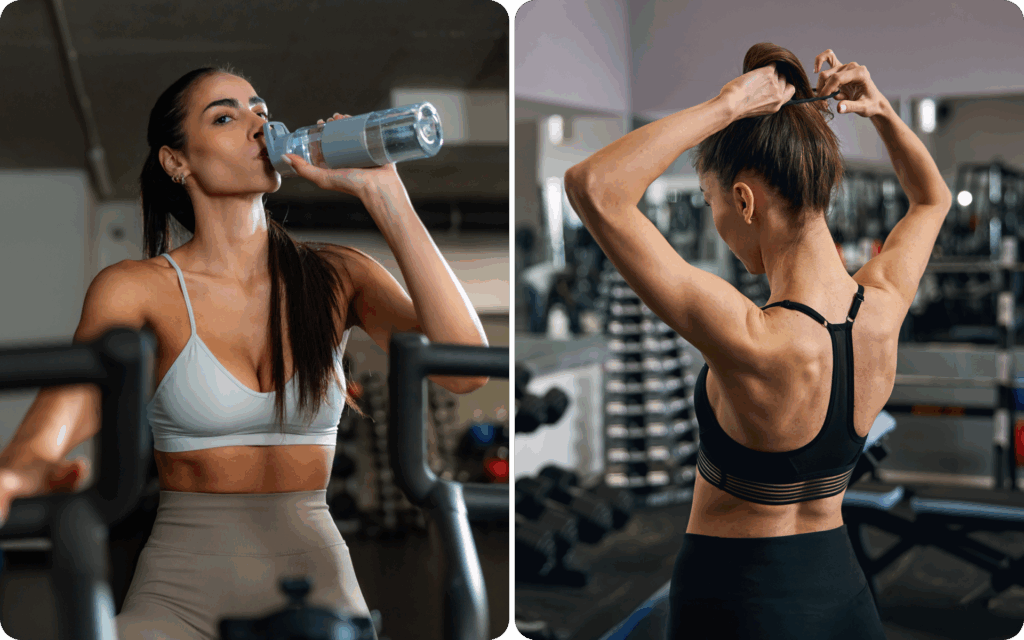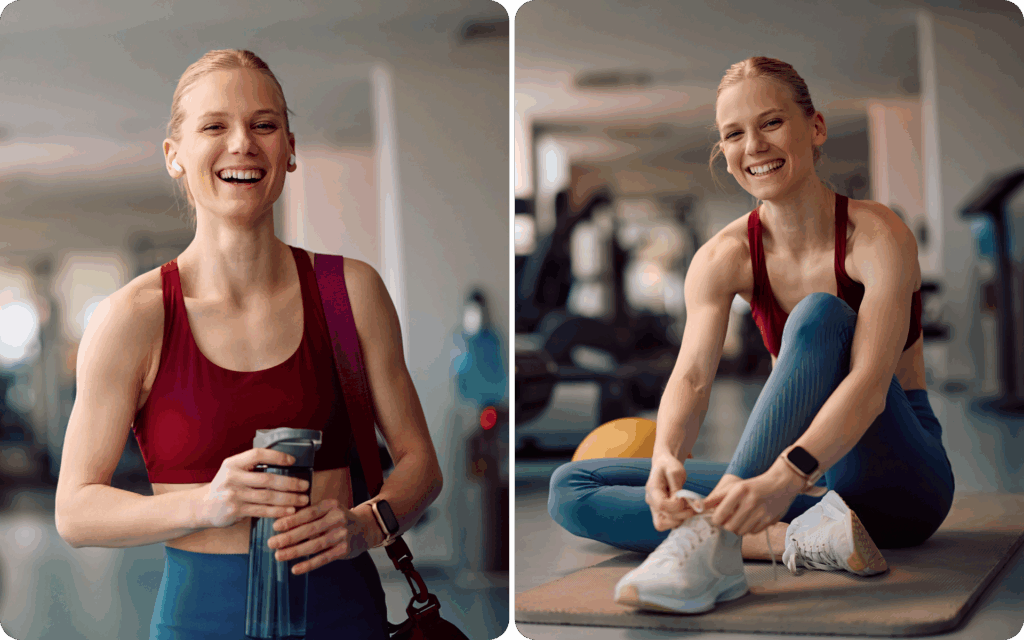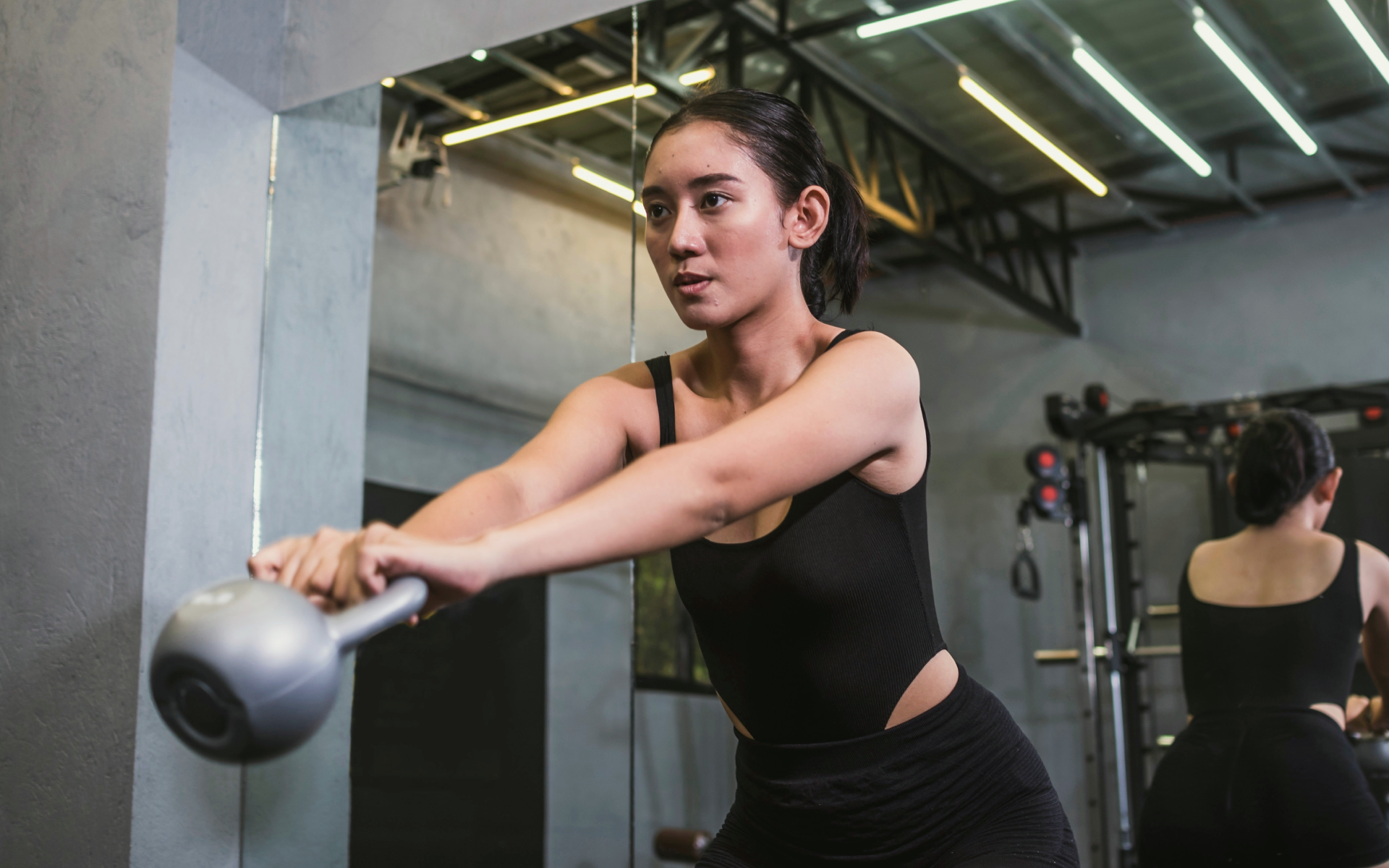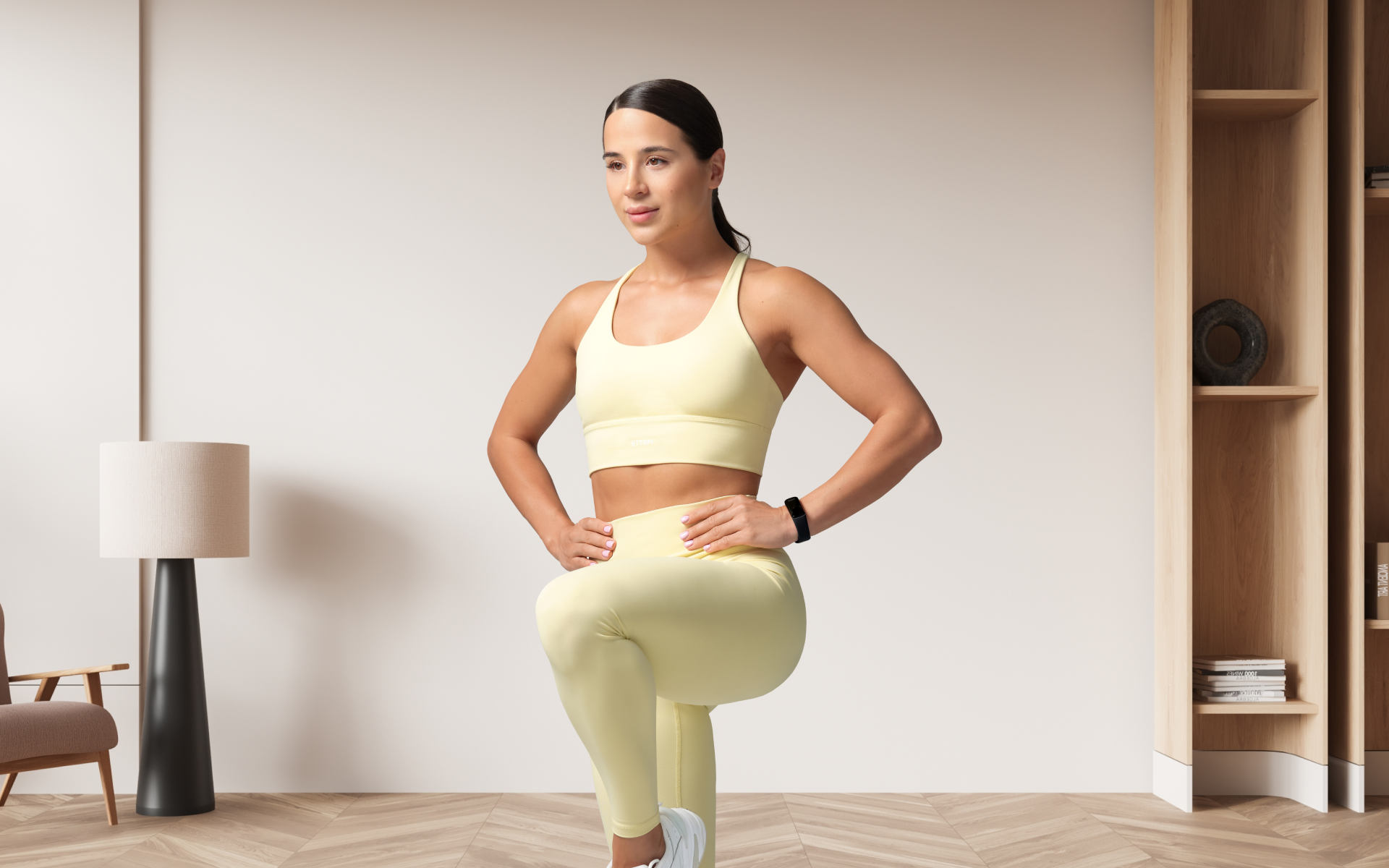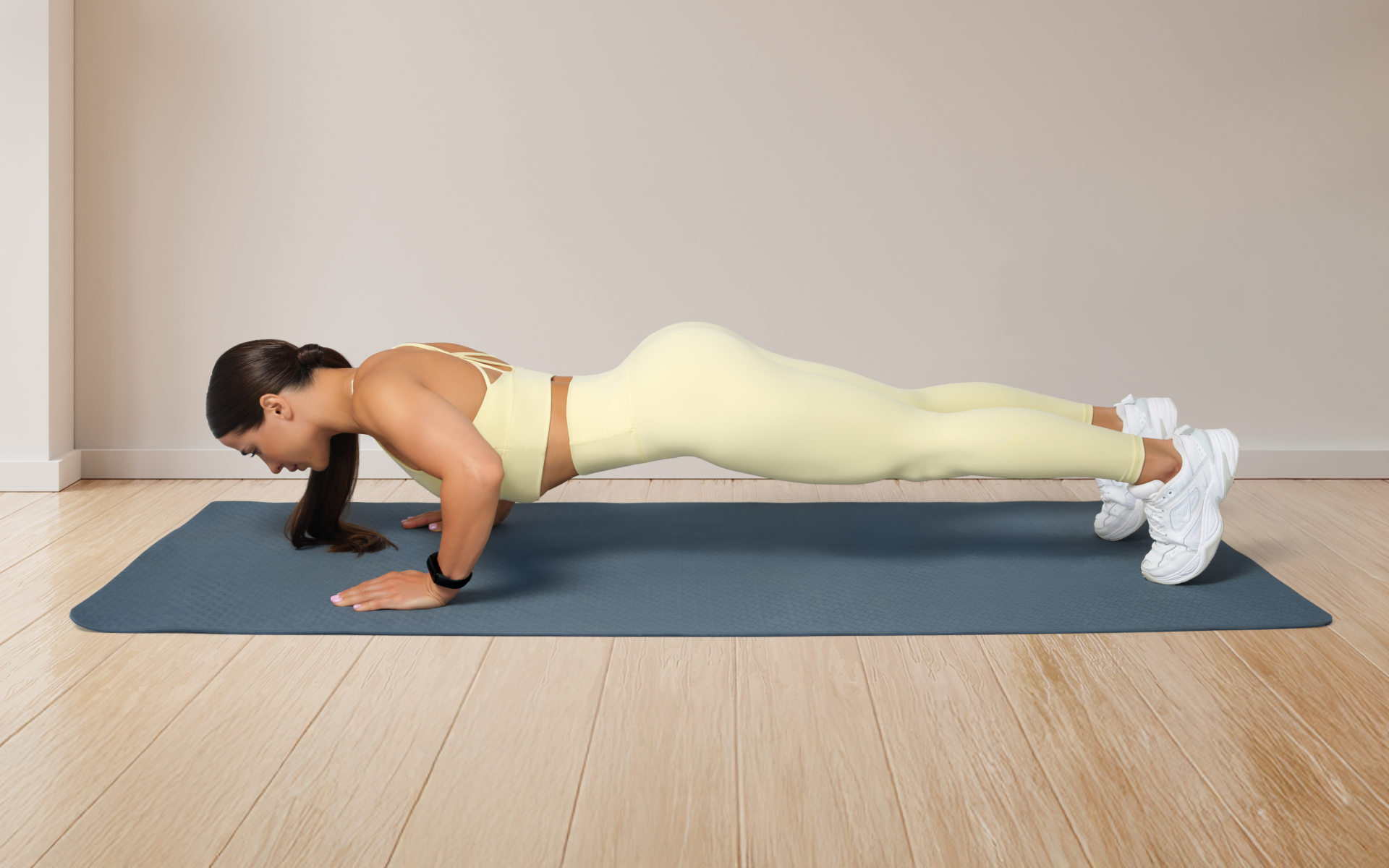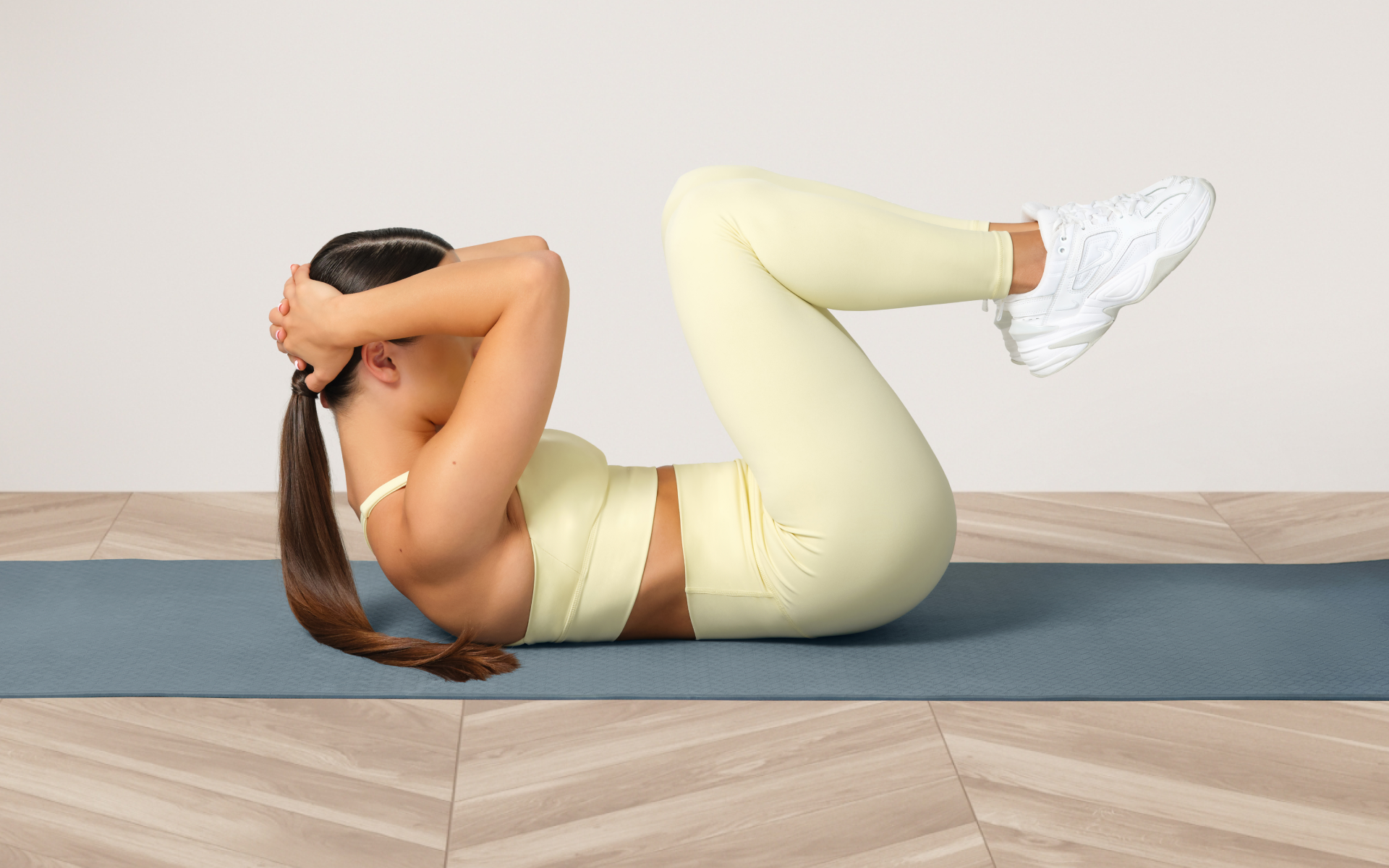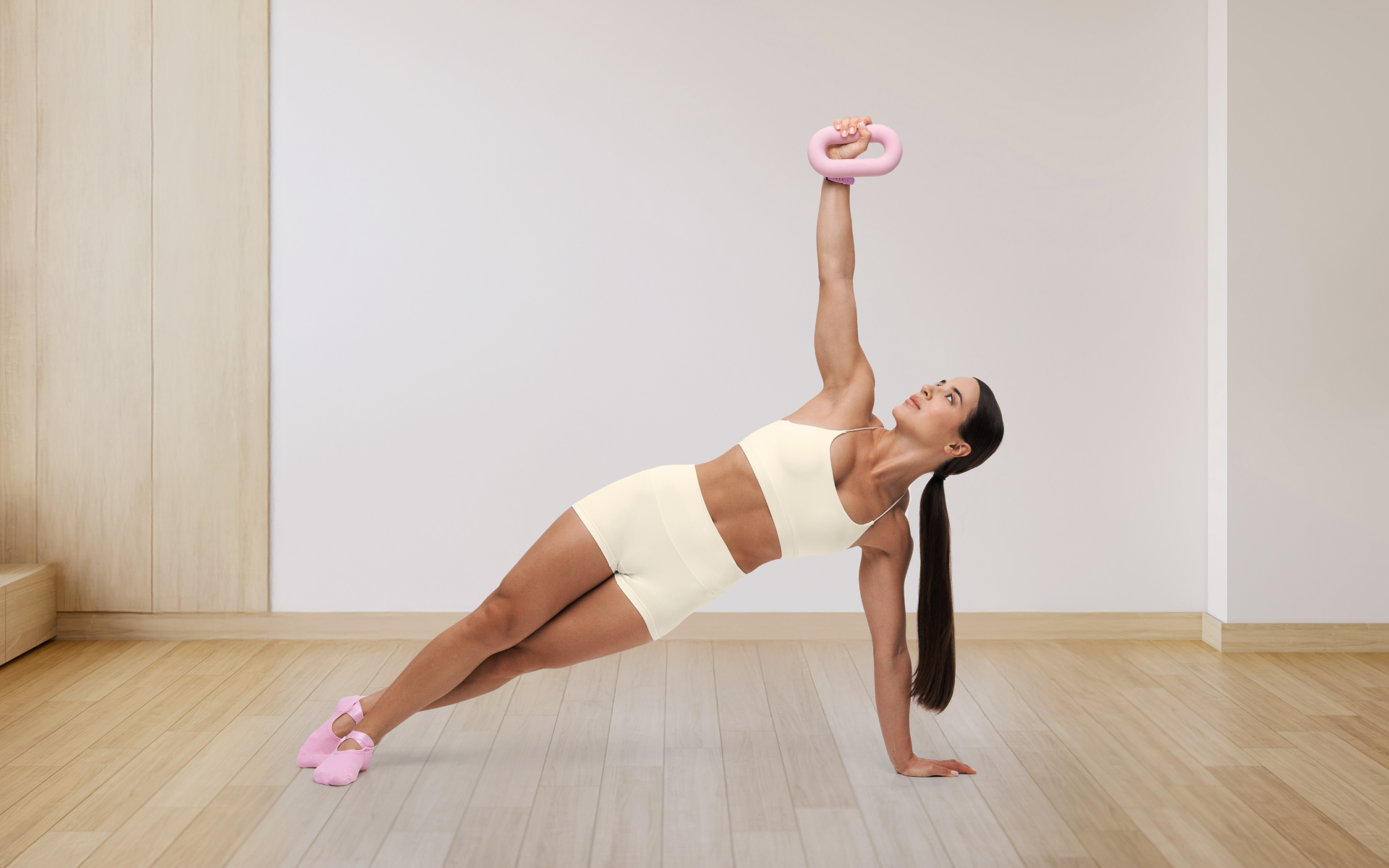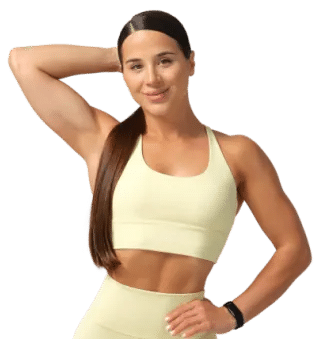Training your entire body in a single session may sound overwhelming, but full-body compound workouts represent one of the most efficient and effective approaches to building strength and muscle.
These workouts focus on multi-joint movements that engage multiple muscle groups simultaneously, which makes them perfect for beginners who want maximum results with minimal time investment.
This comprehensive guide will walk you through everything you need to know about full-body compound workouts, from understanding the science behind muscle growth to creating your first workout program.
Is Full-Body Better than Split?
The debate between full-body training and split routines has persisted for decades in the fitness community. Both approaches have merit, but the optimal choice will depend on your training experience, available time, and specific goals.
Research published in the Journal of Sports Medicine highlighted that full-body workouts are effective for beginners and intermediate trainees. Training each muscle group 2-4 times per week through full-body sessions can provide a strong stimulus for strength and muscle development (1).
Full-body workouts offer several physiological advantages. They maximize protein synthesis frequency, which remains elevated for approximately 24-48 hours after training (2). By stimulating muscles more frequently throughout the week, you maintain a consistently elevated muscle-building environment (3)
Split routines shine when training volume becomes too high to manage in single sessions. Advanced trainees who require 16-20+ sets per muscle group weekly benefit from distributing this volume across multiple specialized sessions (4).
Full-body workouts work best when you:
- Have limited training time (2-3 hours per week)
- Are new to resistance training
- Want to maximize training frequency
- Prefer fewer but longer training sessions
- Focus on functional movement patterns
Reasons why BetterMe is a safe bet: a wide range of calorie-blasting workouts, finger-licking recipes, 24/7 support, challenges that’ll keep you on your best game, and that just scratches the surface! Start using our app and watch the magic happen.
Split routines work best when you:
- Have 5+ hours of weekly training time
- Possess advanced training experience
- Want to emphasize specific muscle groups
- Enjoy variety in daily workouts
- Can commit to 4-6 training sessions weekly
Time efficiency strongly favors full-body training.
Read more: Beginner Calisthenics Moves: A Complete Guide to Getting Started
Can You Build Muscle with Full-Body Workouts?
Full-body compound workouts absolutely support muscle growth when programmed correctly. The key lies in understanding and implementing the fundamental requirements for hypertrophy through this training approach.
Progressive Overload Implementation
Muscle growth requires progressive overload – gradually increasing training demands over time (5). Full-body workouts facilitate this through multiple variables:
- Adding weight
- Increasing repetitions
- Training density
Optimal Training Volume Distribution
Research has suggested a minimum of 4 weekly sets per muscle group for meaningful muscle growth (3, 6). Full-body workouts easily accommodate this requirement by distributing 8-12 weekly sets, which is within the recommended set volume, across 3 training sessions (7).
This approach proves more sustainable than cramming equivalent volume into single-session split routines (6).
Training volume becomes more manageable when it’s spread throughout the week (8). Instead of performing 6 chest exercises in one session, you may include 2 chest-focused movements per session across three workouts.
Enhanced Recovery Patterns
Full-body training promotes superior recovery compared to high-volume split sessions as you generally receive more full recovery days (6).
Furthermore, each muscle group receives at least 24 hours of rest between sessions, allowing complete recovery while maintaining frequent stimulation. This balance optimizes the muscle protein synthesis response that is essential for growth (4).
The systemic nature of full-body training also stimulates greater hormonal responses. Compound movements involving large muscle groups trigger more significant growth hormone and testosterone release compared to isolated muscle training (9).
How to Structure a Full-Body Workout
Effective full-body workout structure follows specific principles that maximize efficiency while ensuring balanced development. The key lies in choosing the right exercises, organizing them logically, and implementing appropriate volume and intensity parameters.
- Exercise Selection Priorities
Choose 6-8 exercises per session, focusing on compound movements that train multiple muscle groups simultaneously. Prioritize bilateral exercises over unilateral variations for time efficiency, although including some single-limb work prevents imbalances.
Structure your exercise selection around movement patterns rather than individual muscles. Include one exercise from each category: squat pattern, hinge pattern, horizontal push, horizontal pull, vertical push, and vertical pull.
- Training Session Organization
Organize exercises from most to least demanding. Start with explosive or complex movements when your nervous system is fresh, then progress to basic strength movements, and finish with assistance exercises.
Place compound movements that require the most coordination early in sessions. Deadlifts and squats demand significant focus and energy, which makes them ideal session starters (10).
- Volume and Intensity Guidelines
Implement 2-4 sets per exercise with 6-15 repetitions per set. Beginners should start with 2-3 sets and then progress to 3-4 sets as adaptation occurs.
This rep range optimizes both strength and muscle growth while remaining manageable for new trainees.
Use loads representing 60-80% of your one-repetition maximum (1RM). Your one-repetition maximum is the heaviest weight you can lift for one full repetition with proper form.
For example, if your 1RM for barbell squats is 100lbs, you would want to use weights between 60-80 lbs for this exercise. This intensity range provides sufficient stimulus for adaptation while maintaining movement quality and reducing the risk of injury.
- Rest Period Management
Allow 2-3 minutes of rest between compound exercises and 1-2 minutes between assistance movements.
Adequate rest will ensure quality performance across all sets while preventing excessive fatigue accumulation (11). Use the following guidelines:
- Compound exercises: 2-3 minutes rest between sets
- Assistance movements: 1-2 minutes rest between sets
If you want to explore more foundational movements, check out our guide on basic full-body workout routines.
What Is a Full-Body Compound Workout to Build Muscle?
Here’s a comprehensive full-body compound workout that is designed specifically for muscle building. This program emphasizes multi-joint movements that provide maximum muscle activation and growth stimulus.
Full-Body Compound Muscle Building Program
Frequency: 3 times per week (Monday, Wednesday, Friday)
Duration: 45-60 minutes per session
Rest between sets: 2-3 minutes for compound movements
Workout:
- Barbell back squat: 3 sets x 8-10 reps @3:00
- Barbell bench press: 3 sets x 8-10 reps @3:00
- Bent-over barbell row: 3 sets x 8-10 reps @2:00
- Overhead press: 3 sets x 10-12 reps @1:30
- Romanian deadlift: 3 sets x 10-12 reps @1:30
- Pull-ups (assisted if needed): 3 sets x 8-12 reps @1:30
- Plank: 3 sets x 30-60 seconds @ 1:00
Barbell Back Squat
The barbell back squat serves as the foundation of lower-body development, targeting quadriceps, glutes, hamstrings, and core musculature. This movement builds functional strength while stimulating muscle growth throughout the entire lower body.
Execution steps:
- Position the barbell on your upper back, resting on your trapezius muscles.
- Stand with your feet shoulder-width apart and your toes turned slightly outward.
- Engage your core and maintain a neutral spine throughout the movement.
- Lower your body by pushing your hips back and bending your knees.
- Descend until your hip crease drops below your knee cap.
- Drive through your heels to return to the starting position.
- Keep your chest up and your knees tracking over your toes throughout.
Barbell Bench Press
The bench press develops the chest, shoulders, and triceps while teaching proper pressing mechanics. This fundamental upper-body movement builds impressive muscle mass when it’s performed consistently with progressive overload.
Execution steps:
- Lie on the bench with your eyes directly under the barbell.
- Grip the bar with your hands positioned slightly wider than shoulder-width apart.
- Create a slight arch in your back and plant your feet firmly on the floor.
- Unrack the bar and position it over your chest with your arms extended.
- Lower the bar to your chest with control, touching lightly at nipple level.
- Press the bar back to the starting position, driving through your entire hand.
- Maintain tight shoulder blades throughout the entire movement.
Bent-Over Barbell Row
This pulling movement targets the latissimus dorsi, rhomboids, middle traps, and rear deltoids. The bent-over row balances pressing movements while building a strong, well-developed back.
Execution steps:
- Stand with your feet hip-width apart, holding the barbell with an overhand grip.
- Hinge at your hips to lower your torso to approximately 45 degrees.
- Keep your knees slightly bent and maintain a neutral spine.
- Pull the bar toward your lower chest, leading with your elbows.
- Squeeze your shoulder blades together at the top of the movement.
- Lower the bar with control back to the starting position.
- Keep your core engaged throughout to protect your lower back.
Overhead Press
The overhead press develops shoulder strength and stability while engaging the entire kinetic chain. This movement builds impressive shoulder and arm development while improving core strength.
Execution steps:
- Stand with your feet hip-width apart, holding the bar at shoulder height.
- Position your hands slightly wider than shoulder-width apart with your palms facing forward.
- Engage your core and glutes to create a stable base.
- Press the bar straight overhead, keeping it over your mid-foot.
- Lock out your arms completely at the top position.
- Lower the bar back to shoulder level with control.
- Keep your ribcage down and avoid arching your back excessively.
When it comes to weight loss, progress is made by inches, not miles, so it’s much harder to track and a lot easier to give up. The BetterMe: Health Coaching app is your personal trainer, nutritionist, and support system all in one. Start using our app to stay on track and hold yourself accountable!
Romanian Deadlift
The Romanian deadlift primarily targets the hamstrings and glutes while teaching proper hip hinge mechanics. This movement complements squatting patterns and builds posterior chain strength.
Execution steps:
- Hold the barbell with an overhand grip, your hands shoulder-width apart.
- Stand with your feet hip-width apart and your knees slightly bent.
- Start the movement by pushing your hips backward.
- Lower the bar by hinging at the hips, keeping it close to your legs.
- Feel a stretch in your hamstrings as you descend.
- Reverse the movement by driving your hips forward.
- Squeeze your glutes at the top to complete the repetition.
Pull-ups
Pull-ups develop the latissimus dorsi, biceps, and grip strength while teaching proper pulling mechanics. This bodyweight movement builds impressive upper-body muscle mass and functional strength.
Execution steps:
- Hang from a pull-up bar with an overhand grip, your hands slightly wider than shoulder-width apart.
- Engage your core and pull your shoulder blades down and back.
- Pull your body upward until your chin clears the bar.
- Focus on leading with your chest rather than just your chin.
- Lower yourself with control back to the starting position.
- Maintain tension throughout the entire range of motion.
- Use assistance bands or machine assistance if you’re unable to complete bodyweight reps.
Plank
The plank builds core stability and endurance while teaching proper spinal alignment. This exercise supports all other movements by developing the foundational strength that is needed for compound lifts.
Execution steps:
- Begin in a push-up position with your forearms on the ground.
- Keep your body in a straight line from your head to your heels.
- Engage your core muscles and avoid allowing your hips to sag.
- Breathe normally throughout the hold.
- Keep your shoulder blades pulled back and down.
- Maintain the position for the prescribed duration.
- Focus on quality over duration – stop when your form breaks down.
For those who are interested in building additional strength alongside muscle mass, explore our full-body strength training routine for complementary programming ideas.
How Long Should a Full-Body Workout Be?
Research has indicated that full-body workouts should typically last 45-75 minutes to optimize muscle growth and strength development (6). This duration allows sufficient time for proper warm-up, exercise execution, and cool-down while preventing excessive fatigue accumulation.
The American College of Sports Medicine recommends 45-60 minutes as the sweet spot for most trainees (12). This timeframe accommodates 6-8 exercises with appropriate rest periods while maintaining training intensity throughout the session.
Workout duration depends on several factors, including:
- Training experience
- Exercise selection
- Rest periods
Beginners may complete effective sessions in 45 minutes, while advanced trainees who require higher volumes may need 60-75 minutes.
Time efficiency improves with experience. New trainees need longer rest periods and more time to set up exercises, while experienced lifters move more efficiently between movements. Your workout duration will naturally decrease as movement competency improves (13).
Quality trumps quantity in resistance training.
Read more: The Ultimate 1-Hour Calisthenics Workout Guide
Can I Do a Full-Body Workout 5 Days a Week?
Training full-body workouts five days weekly isn’t recommended for most individuals, particularly beginners. This frequency violates fundamental recovery principles and can lead to overtraining, increased injury risk, and diminished results.
Muscle protein synthesis peaks 24-48 hours after training and returns to baseline by 72 hours (14). Training the same muscle groups daily prevents this process from completing, ultimately limiting muscle growth potential. Your muscles grow during recovery periods, not during training sessions.
The central nervous system requires 48-72 hours to fully recover from intense compound movements (15). Daily training creates cumulative fatigue that impairs performance, increases injury risk, and reduces training quality over time.
Research has consistently demonstrated that training each muscle group 2-3 times per week optimizes muscle growth (1, 6) . Higher frequencies don’t provide additional benefits and may prove counterproductive for most trainees.
Consider these evidence-based alternatives to daily full-body training:
- 3-day full-body routine with rest days between sessions
- 4-day upper/lower split with alternating focus
- 3-day full-body with 2-day accessory work
- 4-day full-body with alternating intensities
Elite athletes occasionally use daily training, but they employ periodization, vary intensities, and have extensive recovery protocols. Most recreational trainees lack the resources and experience to implement such advanced strategies safely.
Listen to your body’s feedback signals that could indicate inadequate recovery.
- Declining performance
- Persistent fatigue
- Mood changes
- Increased injury susceptibility
To mitigate this from occurring, prioritize sleep, nutrition, and stress management alongside appropriate training frequency.
What Happens if I Only Do Full-Body Workouts?
Training exclusively with full-body workouts produces excellent results for most individuals and presents no significant disadvantages when programmed appropriately. This approach can support long-term muscle growth, strength development, and overall fitness improvements (9).
Full-body training provides balanced muscular development by ensuring that all major muscle groups receive regular stimulation. Unlike specialized programs that might neglect certain areas, full-body routines inherently promote proportional growth patterns (6).
The functional nature of full-body training transfers well to daily activities and sports performance. Full-body workouts prioritize compound movements that mirror real-world demands, developing strength and coordination, which enhances quality of life beyond the gym (16).
Time efficiency makes full-body training sustainable for busy individuals. Three weekly sessions provide comprehensive training stimulus while allowing flexibility for other life commitments. This sustainability factor often leads to better long-term adherence than more demanding programs (6).
Potential limitations emerge primarily for advanced trainees who are looking for specialized development. Competitive bodybuilders or powerlifters may eventually require more targeted approaches to address specific weaknesses or emphasize particular muscle groups.
Some individuals enjoy training variety and may find full-body routines repetitive over extended periods. However, exercise variations, rep ranges, and intensity techniques can maintain engagement within the full-body framework.
Recovery management becomes simpler with full-body training as rest days are built into the schedule. This structure naturally prevents the overuse issues that can plague higher-frequency specialized programs (1).
Those who are looking to incorporate fat loss alongside muscle building should consider exploring our guide on compound exercises for weight loss to optimize your training approach.
Compound movements engage multiple large muscle groups simultaneously, which creates greater metabolic stress and post-exercise oxygen consumption. This elevated metabolism can persist for hours after training, contributing to increased total daily energy expenditure (17). However, fat loss ultimately depends on creating a caloric deficit through combined diet and exercise approaches rather than workout style alone (18). Training full-body workouts on consecutive days is generally not recommended, particularly for beginners. Muscle recovery and protein synthesis require 48-72 hours to complete optimally (14). Back-to-back full-body sessions can impair recovery, reduce training quality, and increase injury risk. If you must train consecutive days, consider alternating between upper- and lower-body focus or significantly reducing intensity on the second day. Another option is to train primary lower body exercises with accessory upper body exercises and vice versa. For example: Prioritize sleep, nutrition, and stress management when your recovery time is limited (19). Consider transitioning from full-body to split routines in the following situations: Advanced trainees who require 16+ weekly sets per muscle group often benefit from distributing this volume across specialized sessions. Other indicators that it’s time for a new program include plateaued progress despite consistent effort, desire for greater training variety, or specific goals requiring focused muscle group emphasis. There isn’t a simple answer to this question as both full-body and push-pull-legs (PPL) routines can be effective for muscle growth and strength gains. It ultimately depends on your individual goals, preferences, and training experience. Full-body workouts involve training all major muscle groups in one session, typically 3 days a week. This type of routine is great for beginners or individuals with limited time, as it allows for adequate rest between sessions while still providing enough frequency to stimulate muscle growth. On the other hand, PPL splits typically have dedicated days for: This allows for more volume per muscle group and can be beneficial for advanced lifters who require more stimulus to continue making progress. Considering your unique goals and schedule, it may be beneficial to try both styles of training and see which works best for you. Remember to listen to your body and make adjustments as needed.Frequently Asked Questions
Do full-body workouts burn more fat?
Can I train full-body two days in a row?
When should I switch from full-body to split routines?
Is a full-body split better than push-pull-legs?
The Bottom Line
A full-body compound workout is ideal for building muscle, increasing strength, and in the process, burning fat. It targets multiple muscle groups, saves time, and can be beneficial for beginners and advanced lifters alike.
The program shared in this article is just one example, but there are many variations and ways to structure a full-body compound workout. Keep experimenting and finding what works best for you. Most importantly, stay consistent with your training to continue making progress toward your fitness goals.
DISCLAIMER:
This article is intended for general informational purposes only and does not serve to address individual circumstances. It is not a substitute for professional advice or help and should not be relied on for making any kind of decision-making. Any action taken as a direct or indirect result of the information in this article is entirely at your own risk and is your sole responsibility.
BetterMe, its content staff, and its medical advisors accept no responsibility for inaccuracies, errors, misstatements, inconsistencies, or omissions and specifically disclaim any liability, loss or risk, personal, professional or otherwise, which may be incurred as a consequence, directly or indirectly, of the use and/or application of any content.
You should always seek the advice of your physician or other qualified health provider with any questions you may have regarding a medical condition or your specific situation. Never disregard professional medical advice or delay seeking it because of BetterMe content. If you suspect or think you may have a medical emergency, call your doctor.
SOURCES:
- Effects of Resistance Training Frequency on Measures of Muscle Hypertrophy: A Systematic Review and Meta-Analysis (2016, link.springer.com)
- Resistance training‐induced changes in integrated myofibrillar protein synthesis are related to hypertrophy only after attenuation of muscle damage (2016, pmc.ncbi.nlm.nih.gov)
- Resistance Training Variables for Optimization of Muscle Hypertrophy: An Umbrella Review (2022, frontiersin.org)
- A randomized trial on the efficacy of split-body versus full-body resistance training in non-resistance trained women (2022, bmcsportsscimedrehabil.biomedcentral.com)
- Effects of Resistance Training Overload Progression Protocols on Strength and Muscle Mass (2024, pubmed.ncbi.nlm.nih.gov)
- No Time to Lift? Designing Time-Efficient Training Programs for Strength and Hypertrophy: A Narrative Review (2021, link.springer.com)
- Dose-response relationship between weekly resistance training volume and increases in muscle mass: A systematic review and meta-analysis (2019, pubmed.ncbi.nlm.nih.gov)
- Effects of training frequency on muscular strength for trained men under volume matched conditions (2021, pmc.ncbi.nlm.nih.gov)
- 5 Benefits of Compound Exercises (2016, acefitness.org)
- The Effects of Exercise Selection Versus Exercise Intensity & Load On Maximal Strength, Muscular Power, And Fatigue in Collegiate Track and Field Athletes (2024, irispublishers.com)
- Effects of Rest Interval Duration in Resistance Training on Measures of Muscular Strength: A Systematic Review (2018, pubmed.ncbi.nlm.nih.gov)
- American College of Sports Medicine position stand. Quantity and quality of exercise for developing and maintaining cardiorespiratory, musculoskeletal, and neuromotor fitness in apparently healthy adults: guidance for prescribing exercise (2011, pubmed.ncbi.nlm.nih.gov)
- Acute Effect of Fixed vs. Self-Selected Rest Interval Between Sets on Physiological and Performance-Related Responses (2024, mdpi.com)
- Skeletal muscle and resistance exercise training; the role of protein synthesis in recovery and remodeling (2016, pmc.ncbi.nlm.nih.gov)
- Neuromuscular Fatigue and Recovery after Heavy Resistance, Jump, and Sprint Training (2018, pubmed.ncbi.nlm.nih.gov)
- Short-Term Compound Training on Physical Performance in Young Soccer Players (2020, pubmed.ncbi.nlm.nih.gov)
- EPOC Comparison Between Resistance Training and High-Intensity Interval Training in Aerobically Fit Women (2021, pmc.ncbi.nlm.nih.gov)
- Fat Loss Depends on Energy Deficit Only, Independently of the Method for Weight Loss (2007, karger.com)
- EXPLORING THE SCIENCE OF RECOVERY (n.d., blog.nasm.org)
